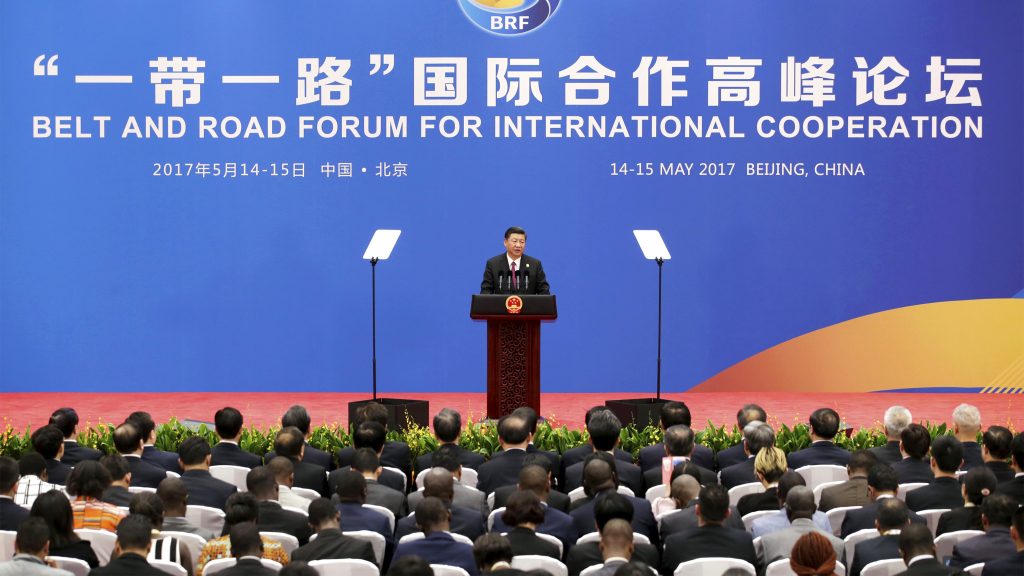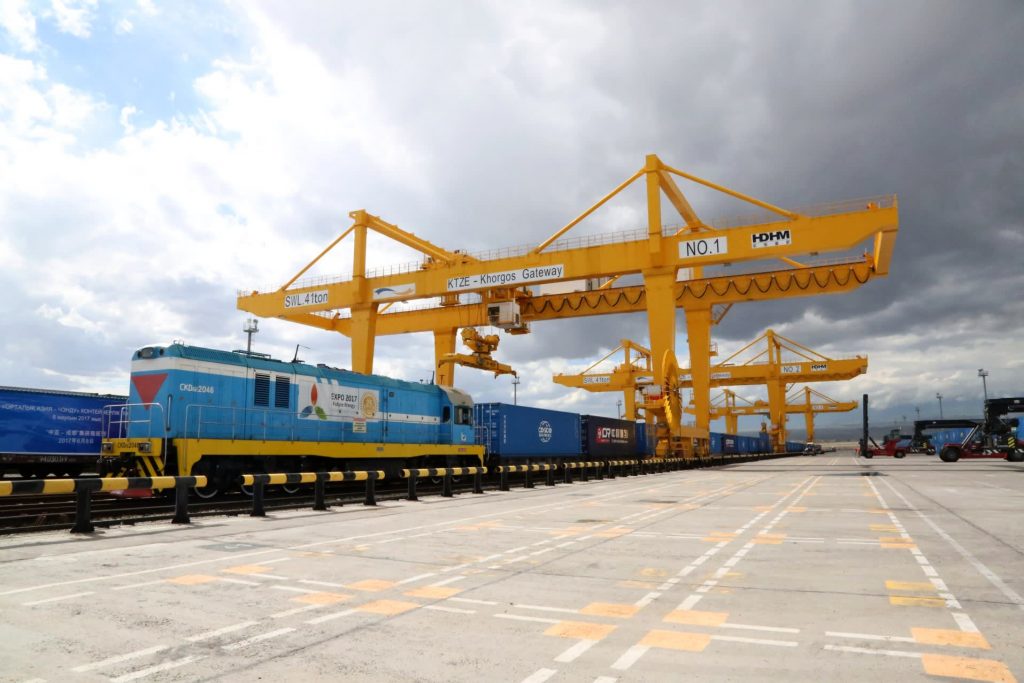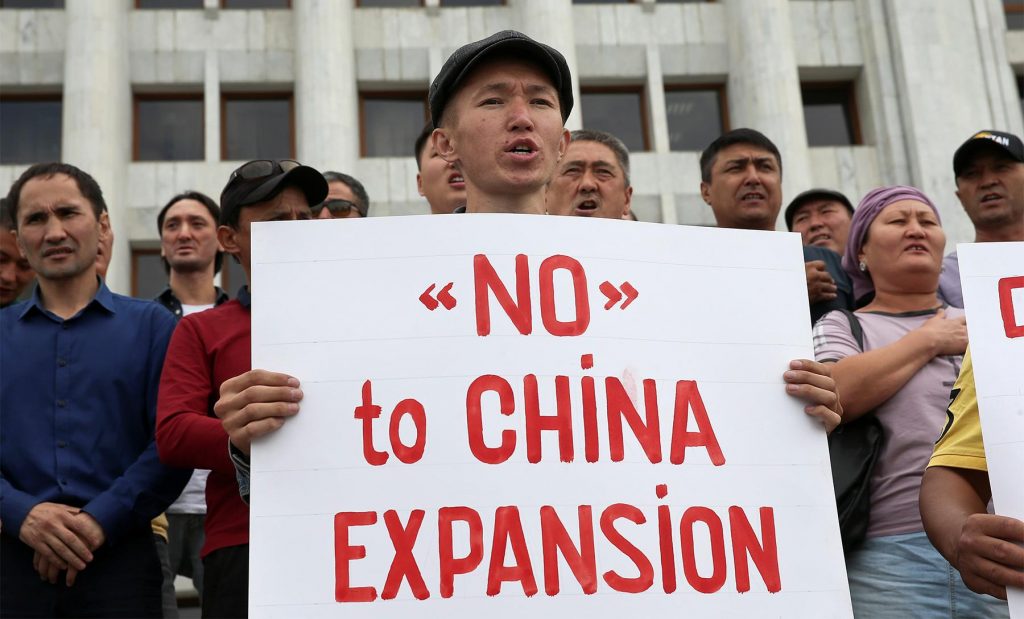SPECIAL REPORT: Public Attitudes Toward China in Central Asia
Recent Articles
Author: Dr. Akbota Karibayeva Meyer
05/11/2020
Introduction
Since the collapse of the Soviet Union at the end of 1991 and the emergence of independent republics in Central Asia, China has actively sought to establish and promote strong political, economic, and security ties with its critical neighboring region. Starting with enhanced bilateral diplomacy and peaceful resolution of border disputes, China-Central Asia relations expanded into strategic regional security partnerships by the early 2000s. In addition, China increased its market share in Central Asia and by 2010 had surpassed Russia, historically the dominant partner, in trade turnover.
In September 2013, Chinese President Xi Jinping, during his trip to Kazakhstan, announced at Nazarbayev University in Nur-Sultan (then Astana) the launch of the Belt and Road Initiative (BRI), an enormous infrastructure development project stretching from East Asia to Europe. The BRI’s land-based component, known as the Silk Road Economic Belt, entails a trans-continental trade route that passes through Central Asia, thereby making it a region of paramount importance to China. Although Chinese investment in the Central Asian republics is not new, BRI gave an unprecedented boost to large capital infrastructure projects and unleashed a myriad of social, economic, and political processes. In light of these developments, this policy brief looks at how China is perceived in Central Asia.

BEIJING, CHINA - MAY 15: Chinese President Xi Jinping attends a news conference at the end of the Belt and Road Forum for International Cooperation on May 15, 2017 in Beijing, China. The Forum, running from May 14 to 15, is expected to lay the groundwork for Beijing-led infrastructure initiatives aimed at connecting China with Europe, Africa and Asia. (Photo by Jason Lee-Pool/Getty Images)
Overview of the Belt and Road Initiative in Central Asia
Designed to stimulate China’s further economic growth by developing new markets and generating additional outside demand for its surplus industrial production, BRI has immense direct economic benefits for China. Less obvious, however, are the initiative’s geopolitical and ideological objectives. Through cheap and easily accessible loans, China gains greater political weight that allows it to balance Russian and Western influence in Central Asia. While for China BRI promises high potential payoff at low initial cost, its implications for Central Asian countries are more mixed and complex.
At first glance, BRI offers Central Asian republics a flow of funds free of political conditionality that many international financial substitutions usually require to develop critical hard infrastructure. This situation led to improving investment flows, an increasing standard of living, and expanding economic opportunities for their populations. However, although Chinese investment is needed and welcomed in the region, BRI has many dangerous pitfalls for the recipient countries.
The largest concern lies in the potential debt spiral that may last beyond one generation. In 2017, China, primarily through the China Export-Import Bank, accounted for about 40 percent and 50 percent of the public debts of Kyrgyzstan and Tajikistan, respectively. Indeed, the 2017 survey shows that 37 percent of respondents in Kyrgyzstan consider China as the greatest economic threat. These concerns are not unfounded: the first consequences of the Chinese “debt-trap” diplomacy are already visible in Tajikistan, where, in April 2018, the government handed over a gold mine to a Chinese company as a remuneration for a Dushanbe power plant retrofitting loan.
In addition to financial dependency, the scale of BRI investment can mean Central Asia will heavily rely on China for infrastructural maintenance. For implementing BRI projects, China tends to export Chinese full company branches, bringing in Chinese labor migrants that remain on-site even after projects are completed. Finally, factors such as high opacity, alleged corruption, and a disregard for labor and environmental standards that can often characterize the Chinese conduct of business in Central Asia contribute to skepticism about the sustainability of BRI-driven development.

International Centre of Boundary Cooperation “Khorgos,” located on the Kazakhstan-Chinese border, within the territory of Kazakhstan. Source: Nikkei Asian Review
Public Perceptions of China in Central Asia
Formal State Position
Given the controversies around BRI projects, it comes as no surprise that public perception of China in Central Asia is a complex and sensitive topic. The governments of the republics welcome the new investment flows. With growing populations, expanding economies, increasing urbanization, and rising energy demand, the Central Asian states greatly need funds to finance their efforts to rebuild and modernize the Soviet-era infrastructure. With Russia’s limited economic capacity and changing foreign-policy priorities, as well as interest and engagement from the West that often seems intermittent at best, the Central Asian leaders see China as an optimal partner with rational and reasonable expectations. Governments look beyond investments in BRI projects, to win future Chinese economic engagement to help promote their countries’ development, prosperity, and employment levels. On an individual level, state officials may also benefit personally from deepening cooperation with Chinese companies in view of the low transparency of the BRI projects, further contributing to a generally positive attitude toward China at the state level. Chinese investment flows have led governments in the region to tread carefully in their public statements about Chinese policies. While recognizing that Chinese projects and policies can be problematic, the overall sense the region’s officials express is that China is essentially a benevolent power.
Broad Public Attitude
Largely uninformed about the Chinese business in the region, the public tends to view things through the prism of long-standing skepticism. There are several dimensions to this negative public attitude toward China in Central Asia that go along the lines of the identity-based prejudice, the Chinese business practices in the region, and the way respective governments approach their relations with China.
First, there is a wide-spread prejudice against the Chinese per se, mostly rooted in the history of enmity ingrained in folklore narratives and reinforced by the lingering memory of Soviet-era propaganda. In Central Asia, China has long been looked at with caution due to the history of confrontation between China and the Central Asian nomads. Adopting the existing narratives to the contemporary context, people tend to construe the increasing Chinese presence in Central Asia as a well-thought-out move of an old predatory neighbor looking to subjugate and exploit the region to its benefit. For instance, some Central Asian activists argue that China seeks to take advantage of Central Asia economically by turning it into a “dumping ground” for Chinese goods and “a source of natural resources” — the exact same framework history books in the region use to describe colonialist policies of the Russian Empire. As is evident from increasingly frequent anti-Chinese protests in Kyrgyzstan and Kazakhstan, civil society has a serious concern over “Chinese expansion.”

People protest against the construction of Chinese factories in Kazakhstan during a rally in Almaty, Kazakhstan September 4, 2019. Source: Reuters
In addition to fear of potential neocolonialist intentions, the Central Asian public’s awareness of the demographic pressures in China further adds to suspicion and speculation. Although not corroborated by actual hard evidence, domestic groups in select countries entertain the possibility of Chinese overpopulation pressure — and, to a lesser extent, gender imbalance — as driving the BRI in Central Asia. Amplified by the nationalist sentiments and the public’s often underlying antipathy toward the Chinese, this concern has a strong mobilizing capacity. The 2016 land-reform protests in Kazakhstan illustrated this situation when the public pushed back on a new law that aimed to extend the land-lease period for foreigners. Driven by fear the new law would allow Chinese nationals to purchase Kazakhstani land in the future, the unexpectedly strong public discontent resulted in then-President Nazarbayev suspending it altogether. Indeed, as 2017 survey data suggest, 45 percent of the respondents in Kazakhstan do not see a clear and immediate Chinese threat at the moment but believe it might arise in the future, confirming significant levels of background anxiety on this question.
The second dimension of Central Asians’ sinophobic inclinations revolves around the implications of the Chinese presence in the local job markets and business environment. Countries in the region have growing, young populations and the pressure on governments to see increased employment opportunities is strong. However, business practices Chinese companies tend to adopt in Central Asia result in intensified competition for job opportunities as well as a deterioration in labor conditions, pushing people to view China as a “disruptor” and “exploiter.”
Chinese contractor companies often bring their own Chinese employees to Central Asia and prioritize the Chinese in their hiring policies. A Kyrgyz state official reports, for example, joint Kyrgyz-Chinese projects normally reserve 70 percent of the available jobs for Chinese engineers and technicians and open the remaining 30 percent for local hire. In line with this concern, the number of Chinese labor migrants in Tajikistan saw an almost five-fold increase from 2010 to 2016. Consequently, Chinese projects fail to generate meaningful results in job creation. The technical capacity and expertise to run the BRI products remain controlled if not monopolized by Chinese workers, naturally giving them an upper hand on the BRI-related labor market.
Apart from increased competition, the influx of Chinese labor migrants, as far as the domestic populations are concerned, can lower salaries and working conditions. Chinese migrants are seen as willing to work for lower pay in worse conditions. There are charges as well that Chinese-owned companies reportedly ignore environmental standards, creating hazardous and unhealthy conditions. This situation has already resulted in dozens of various workplace protests and violent inter-ethnic confrontations, starting from those at Chinese-owned gold mines in Solton-Sary, Kyrgyzstan, in 2011, and continuing with those at oil refineries in the Mangistau region of Kazakhstan in September 2019. Complementing the existing identity-based prejudice, Chinese migrants also tend to assimilate poorly within the Central Asian societies. Unlike migrants from Russia, or Uighurs and Dungans who migrated from China to Kazakhstan in the past, ethnic Han Chinese migrants have an entirely different cultural profile. Altogether, these factors tend to preclude people-to-people bonding over shared linguistic, cultural, or religious links, and exacerbate the negative attitudes against China.

People protest holding placards "No to Chinese Fascism" during a rally in Bishkek, Kyrgyzstan, December 5, 2018. Source: AkiPress
The third and largest dimension of anti-Chinese sentiments in Central Asia stems from local officials’ approach to China. Indeed, anti-Chinese protests are often anti-governmental in nature due to the wide-spread association of an inherent link between the two. While Chinese companies may indeed seek to take advantage of the institutional weaknesses of the Central Asian countries, the domestic public is more frustrated with what they perceive as a failure of governments to protect the interests of their own people. It is charged that Chinese labor migrants arrive and take jobs despite existing local regulations that restrict the percentage of foreign employees at any company; the state thus seems unable to enforce the law effectively. In the same vein, as Central Asian civil society activists claim, governments ignore Chinese companies’ disregard for environmental and labor standards, and provide it with preferential treatment when it comes to assigning infrastructure contracts on the municipal level. In this sense, the public blames Chinese business practices for exacerbating the already high level of domestic corruption.
An increasingly pressing and sensitive issue that adds to the frustration with the state approach to China is the forcible detention of Muslim Central Asians in “re-education” camps in Xinjiang. The reports of strengthening Chinese state repression of Muslims in the Xinjiang Uighur Autonomous Region (XUAR) started to emerge in early 2017. A year later, they were followed by the exposure of so-called “re-education” camps, where up to 2 million forcibly detained Muslims — mostly of Uighur, Kazakh, Kyrgyz, and Uzbek ethnicity — are being violently pressed to give up their ethnic and religious identity. A human rights abuse of this scale triggered public discontent in Central Asia, mobilizing civil society in Kyrgyzstan and Kazakhstan to demand a direct and decisive response from their respective governments. However, the anti-Chinese protests have been consistently suppressed in both countries, and state officials have not been commenting publicly on their efforts to address the issue. The seeming failure of governments to adjust their foreign policy toward China further exacerbates the anti-Chinese sentiments in the region.
Comment
Central Asian governments are caught between the irresistible economic and development opportunities that expanding Chinese investment flows offer and domestic public anxieties and pressures to stiffen policies toward China. The trickiest part about this situation largely lies in the asymmetric nature of the China-Central Asia partnership and the lack of exclusive channels of communicating with civil society.
On the one hand, Central Asian governments in the interest of stability and the development of a healthy dialogue with the people have to take public dissatisfaction with the status quo seriously. Given the increasing frequency and intensity of anti-Chinese incidents and demonstrations, governments cannot continue to appear to their publics as being dismissive. On the other hand, the governments seem unable to demand public concessions from Chinese policymakers and businesses. Despite leverage Central Asia might have due to its critical geostrategic location, in reality, China, if provoked, can easily impose more stringent financing conditions as well as cut or delay projects, negatively affecting already highly dependent Central Asian economies. Therefore, Central Asian governments have to approach any adjustments in their China policy with caution and careful diplomacy.
Given this situation, Central Asian governments should strive to boost the transparency of BRI or other business dealings with China and work to build trust and strong communication channels with their broader publics. Keeping Chinese activities in Central Asia in the shadow prompts public suspicion of state officials’ involvement in Chinese project, opening them to charges of corruption and other malfeasance. Silence on the question of repatriation of ethnic Central Asians from Xinjiang re-education camps creates a perception that governments are not addressing it. It adds to the existing public misapprehension that state leaders may be serving a foreign power’s interests. Thus, the Central Asia governments need to reassert their role as agents and advocates of their people’s interests by adopting strategies that strengthen the rapport with civil society.
To avoid allowing an information vacuum that can be filled with fallacious speculation, the region’s governments should promote more nuanced and comprehensive media coverage and greater transparency on Chinese conduct in the region. Efforts to raise awareness about the Chinese presence will contribute to the beneficial demystification of China as a regional actor. The governments should find a way to communicate more clearly the conditions and rationales behind policy decisions relating to China to establish a more nuanced public understanding of this complex issue.